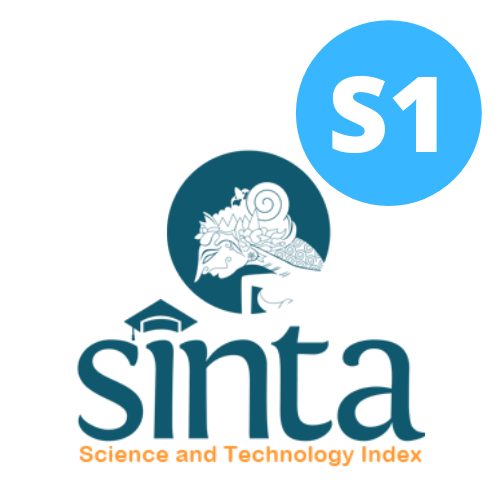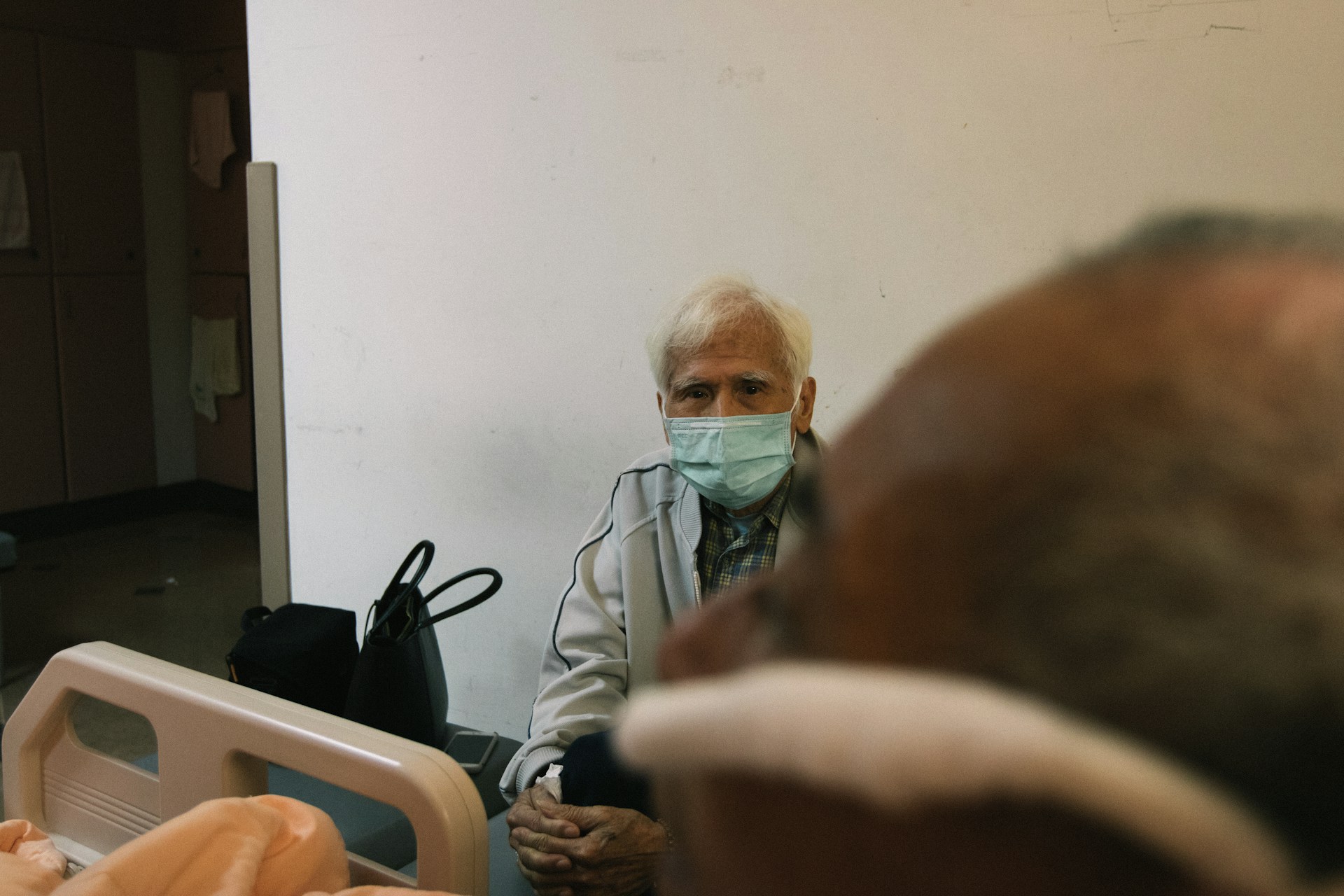Risk Factors of Stunting on The First Thousand Days of Life
Faktor Risiko Stunting pada Seribu Hari Pertama Kehidupan
Downloads
Background: Kebonaagung is one of focus locations of stunting in Semarang Regency. Stunting affected by risk factors that exist in the first thousand days of life.
Objectives: To examine the increased risk of stunting in toddlers based on maternal mid upper arm circumference (MUAC) in early pregnancy, maternal anemia status in third semester, birth weight, and birth length.
Methods: This research design was analytic observational with cohort retrospective approach. Population was toddlers aged 12-35 months in Kebonagung Sumowono District Semarang Regency. There were 71 subjects in this research obtained by total sampling technique. MUAC, anemia status, birth weight, and birth length data were obtained by the subjects maternal and child health book. Data of stunting was taken by doing nutritional anthropometry assessment procedures. Data analysis was done by counting relative risk (RR).
Results: There are 25.35% toddlers with stunting, 25.35% mothers of the toddlers with history of risk of chronic energy deficiency, 25.35% mothers of the toddlers experiencing anemia in third semester of pregnancy, 14.08% toddlers have history low birth weight, and 16.90% of toddlers have history of short birth length. Small MUAC size in early pregnancy, low hemoglobin level in the third semester of pregnancy, low birth weight, and short birth length are increasing risk of becoming stunting in toddlers (RR = 1.87 (95% CI: 0.86-4.09); RR = 1.47 (95% CI: 0.65-3.35); RR = 1.22 (95% CI: 0.36-4.37); RR = 1.41 (95% CI: 0.56-3.53), respectively).
Conclusions: Nutritional status of pregnant women and infant can affect stunting incidence in toddlers. Stunting prevention program in the first thousand days of life period is need to be done.
BPS. Badan Pusat Statistik. https://www.bps.go.id/pressrelease/2021/11/15/1846/indeks-pembangunan-manusia--ipm--indonesia-tahun-2021-mencapai-72-29--meningkat-0-35-poin--0-49-persen--dibandingkan-capaian-tahun-sebelumnya--71-94-.html (2021).
World Health Organization, U. N. C. F. ("ŽUNICEF)"Ž & W. B. Levels and trends in child malnutrition: UNICEF / WHO / The World Bank Group joint child malnutrition estimates: key findings of the 2021 edition. World Healt Organization (WHO) https://apps.who.int/iris/handle/10665/341135 (2021).
Badan Penelitian dan Pengembangan Kesehatan Kementerian Kesehatan Republik Indonesia. Laporan Nasional Riskesdas 2018. (2018).
SSGI. buku saku hasil studi status gizi indonesia (SSGI) tingkat nasional, provinsi, dan kabupaten/kota tahun 2021. Angew. Chemie Int. Ed. 6(11), 951–952. 2013–2015 (2021).
Soliman, A. et al. Early and Long-term Consequences of Nutritional Stunting: From Childhood to Adulthood. Acta Biomed 92, 2021168 (2021).
Ekholuenetale, M., Barrow, A., Ekholuenetale, C. E. & Tudeme, G. Impact of stunting on early childhood cognitive development in Benin: evidence from Demographic and Health Survey. Egypt. Pediatr. Assoc. Gaz. 68, (2020).
Kpewou, D. E. et al. Maternal mid-upper arm circumference during pregnancy and linear growth among Cambodian infants during the first months of life. Matern. Child Nutr. 16, e12951 (2020).
Tampy, S. T., Nugroho, H. W. & Syuadzah, R. Association between Maternal Anemia with Stunting Incidence among Newborns in Surakarta, Central Java. (2020) doi:10.26911/THE7THICPH.03.11.
Aisyah Putri, T., Anindita Salsabilla, D. & Kurniawan Saputra, R. The Effect of Low Birth Weight on Stunting in Children Under Five: A Meta Analysis. Univ. Sebel. Maret Meta-Analysis 496 (2021) doi:10.26911/thejmch.
Abbas, F., Kumar, R., Mahmood, T. & Somrongthong, R. Impact of children born with low birth weight on stunting and wasting in Sindh province of Pakistan: a propensity score matching approach. Sci. Reports | 11, 19932 (2021).
Sawitri, A. J., Purwanto, B. & -, I. BIRTH WEIGHT AND BIRTH LENGTH AFFECTING STUNTING INCIDENT IN TODDLER. Indones. Midwifery Heal. Sci. J. 5, 325–332 (2021).
Krebs, N. F. et al. Birth length is the strongest predictor of linear growth status andstunting in the first 2 years of life after a preconception maternalnutrition intervention: the children of the Women First trial. Am. J. Clin. Nutr. 116, 86–96 (2022).
Kemenkes RI. Peraturan Menteri Kesehatan Republik Indonesia Nomor 2 Tahun 2020 Tentang Standar Antropometri Anak. (2020).
Harjatmo, T., Par'i, H. & Wiyono, S. Bahan Ajar Penilaian Status Gizi. (Kementrian Kesehatan Republik Indonesia, 2017).
Supariasa, I., Bakri, B. & Fajar I. Penilaian Status Gizi. (EGC, 2014).
Badan Penelitian dan Pengembangan Kesehatan Kementrian Kesehatan RI. Riset Kesehatan Dasar (Riskesdas) 2013. http://www.depkes.go.id/resources/download/general/Hasil Riskesdas 2013.pdf?opwvc=1 (2013).
Saleh, A., Syahrul, S., Hadju, V., Andriani, I. & Restika, I. Role of Maternal in Preventing Stunting: a Systematic Review. Gac. Sanit. 35, S576–S582 (2021).
Mason, J. B. et al. The first 500 days of life: policies to support maternal nutrition. Glob. Health Action 7, (2014).
Sukmawati, S., Hendrayati, H., Chaerunnimah, C. & Nurhumaira, N. Status Gizi Ibu Saat Hamil, Berat Badan Lahir Bayi Dengan Stunting Pada Balita Usia 06-36 Bulan Di Puskesmas Bontoa. Media Gizi Pangan 25, 18–24 (2018).
Sen, J., Roy, A. & Mondal, N. Association of Maternal Nutritional Status, Body Composition and Socio-economic Variables with Low Birth Weight in India. doi:10.1093/tropej/fmp102.
Sebayang, S. K., Dibley, M. J., Kelly, P. J., Shankar, A. V & Shankar, A. H. Determinants of low birthweight, small-for-gestational-age and preterm birth in Lombok, Indonesia: analyses of the birthweight cohort of the SUMMIT trial. doi:10.1111/j.1365-3156.2012.03039.x.
Tejayanti, T. Determinants of Chronic Energy Deficiency and Low Body Mass Index of Pregnant Women in Indonesia. J. Kesehat. Reproduksi 10, 173–180 (2020).
Salakory, G. T. J. & Wija, I. B. E. U. Hubungan Anemia Pada Ibu Hamil Terhadap Insidensi stunting di RS Marthen Indey Jayapura Tahun 2018-2019. Maj. Kedokt. UKI 37, 9–12 (2021).
Abdillah, S. The Effect of Maternal and Child Factors on Stunting in Children Under Five Years in Rural Indonesia. KnE Life Sci. 2022, 813–822 (2022).
Soliman, A., De Sanctis, V. & Kalra, S. Anemia and growth. Indian J. Endocrinol. Metab. 18, S1–S5 (2014).
Georgieff, M. K., Krebs, N. F. & Cusick, S. E. The Benefits and Risks of Iron Supplementation in Pregnancy and Childhood. doi:10.1146/annurev-nutr-082018-124213.
Aryastami, N. K. et al. Low birth weight was the most dominant predictor associated with stunting among children aged 12-23 months in Indonesia. BMC Nutr. 3, 1–6 (2017).
Halli, S. S., Biradar, R. A. & Prasad, J. B. Low Birth Weight, the Differentiating Risk Factor for Stunting among Preschool Children in India. Int. J. Environ. Res. Public Health 19, (2022).
Zoleko-Manego, R. et al. Birth weight, growth, nutritional status and mortality of infants from Lambaréné and Fougamou in Gabon in their first year of life. PLoS One 16, e0246694 (2021).
Alim, K. Y., Rosidi, A. & Suhartono, S. Birth length, maternal height and pesticide exposure were predictors of child stunting in agricultural area. J. Gizi dan Diet. Indones. (Indonesian J. Nutr. Diet. 6, 89–98 (2019).
Maciej Serda et al. Short birth length, low birth weight and maternal short stature are dominant risks of stunting among children aged 0-23 months: Evidence from Bogor longitudinal study on child growth and development, Indonesia. Malays. J. Nutr. 24, 11–23 (2018).
Utami, N. H. et al. Short birth length, low birth weight and maternal short stature are dominant risks of stunting among children aged 0-23 months: Evidence from Bogor longitudinal study on child growth and development, Indonesia. Malays. J. Nutr. 24, 11–23 (2018).
Nur, T. et al. Birth Weight and Length Associated with Stunting among Children Under-Five in Indonesia. J. Gizi Pangan 16, 99–108 (2021).
Kragel, E. A., Merz, A., Flood, D. M. N. & Haven, K. E. Risk factors for stunting in children under the age of 5 in rural guatemalan highlands. Ann. Glob. Heal. 86, (2020).
Septiana, R., Djannah, S. N. & Djamil, M. D. HUBUNGAN ANTARA POLA PEMBERIAN MAKANAN PENDAMPING ASI (MP-ASI) DAN STATUS GIZI BALITA USIA 6-24 BULAN DI WILAYAH KERJA PUSKESMAS GEDONGTENGEN YOGYAKARTA. Kes Mas J. Fak. Kesehat. Masy. 4, 118–125 (2010).
Fikawati, S., Syafiq, A., Ririyanti, R. K. & Gemily, S. C. Energy and protein intakes are associated with stunting among preschool children in Central Jakarta, Indonesia: a case-control study. Malays. J. Nutr. 27, 81–91 (2021).
Domili, I., Ruhmayanti, N. A., Tumenggung, I., Misnati & Hinelo, S. P. Analysis of energy and protein intake of stunting children in Ilotidea village, Tilango, Gorontalo. Enfermería Clínica 30, 227–230 (2020).
Campos, A. P., Vilar-Compte, M. & Hawkins, S. S. Association Between Breastfeeding and Child Stunting in Mexico. Ann. Glob. Heal. 86, 1–14 (2020).
Lestari, M. Kontribusi Kondisi Fisik Lingkungan Rumah dengan Kejadian Diare dan Hubungannya terhadap Insidensi stunting. Indones. J. Public Heal. Nutr. 1, 101–113 (2021).
Choiroh, Z. M., Windari, E. N. & Proborini, A. Hubungan antara Frekuensi dan Durasi Diare dengan Insidensi stunting pada Balita Usia 24-36 Bulan di Desa Kedungrejo Kecamatan Pakis. J. Issues Midwifery 4, 131–141 (2020).
Copyright (c) 2022 Amerta Nutrition

This work is licensed under a Creative Commons Attribution-ShareAlike 4.0 International License.
AMERTA NUTR by Unair is licensed under a Creative Commons Attribution-ShareAlike 4.0 International License.
1. The journal allows the author to hold the copyright of the article without restrictions.
2. The journal allows the author(s) to retain publishing rights without restrictions
3. The legal formal aspect of journal publication accessibility refers to Creative Commons Attribution Share-Alike (CC BY-SA).
4. The Creative Commons Attribution Share-Alike (CC BY-SA) license allows re-distribution and re-use of a licensed work on the conditions that the creator is appropriately credited and that any derivative work is made available under "the same, similar or a compatible license”. Other than the conditions mentioned above, the editorial board is not responsible for copyright violation.












































